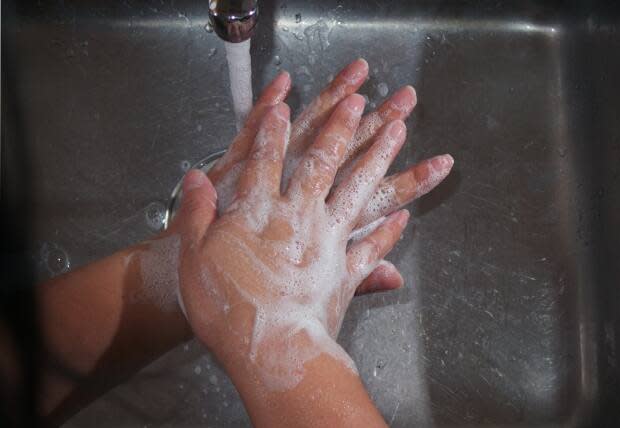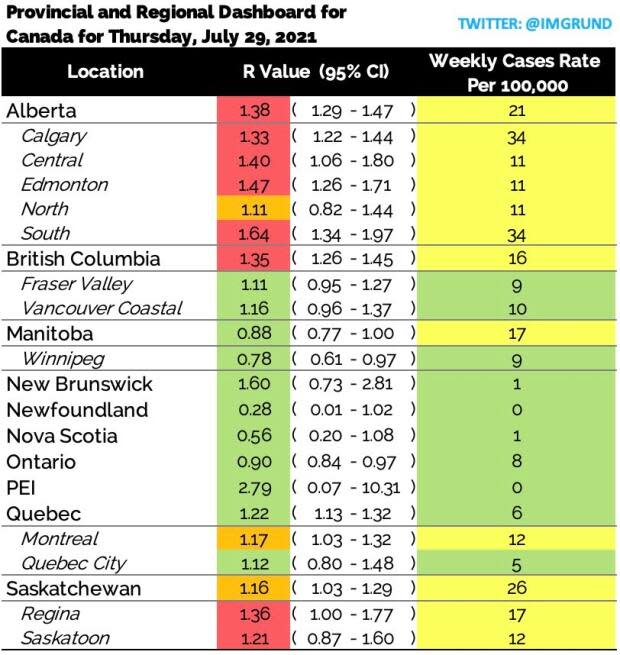Rising COVID-19 transmission in Sask. a 'troubling' trend: statistician

Data in Saskatchewan shows the rate of COVID-19 transmission has been growing.
It's a "troubling" trend, according to COVID-19 biostatistician Ryan Imgrund. The Ontarian has been tracking reproduction values daily for Canadian provinces and cities since November 2020.
"It's really been the last week where we've seen [Saskatchewan's] R value significantly above one," Imgrund said, adding it has averaged 1.2 for the last eight days.
The R value indicates how many more people become infected from one infectious person. The upswing in Saskatchewan's R value follows the government's decision to drop all public health restrictions, including mandatory masking in public spaces and enforced self-isolation. The restrictions were lifted July 11.
"If you go ten days after that — July 21 — that's where we started to see the R values go above one," Imgrund said.
He said data from other regions has shown that it takes about 1.5 weeks to see changes following a change in public health measures.
"Averaging 1.2 is very, very troubling, and the fact that it's been that high for more than a week is also really troubling."
If the trend continues or gets worse, Imgrund said that data should trigger public health intervention.
"If not, you're going to have to be happy with the case count that you're at now, because it's going to be along and around and increasing for a very, very long time."
For example, Imgrund said with an R value of 1.16, 100 infections causes 116 new infections. Imgrund said the Delta variant speeds this up and the escalation can happen in about three days.
"If there were 100 daily cases released today at a constant reproduction value of 1.16, you'd be seeing about 4.5 times as many cases at the end of the month," he said, adding the situation is worse in the capital city. "Regina is sitting right now at a reproduction value of 1.36."
The fourth wave is expected to hit the unvaccinated population, which includes people under 12 who can't get vaccinated. As of Thursday, 63 per cent of eligible Saskatchewan people were fully vaccinated.

Imgrund refers to an R value above 1.2 as "catastrophic" because of how quickly it can spiral out of control. He said that — aside from in Alberta and Saskatchewan — reproduction values around 1.2 typically spark public health action.
"That's when we reintroduce masking, we reintroduce gathering limits. We may have to reduce capacity at some venues. We may stop indoor dining," he said.
Saskatchewan's health minister Paul Merriman has said the government is not considering public health restrictions at this time.
When asked about the R value, Merriman told the CBC's Stefani Langenegger that overall case count was low and that vaccines were helping control the virus.
He said there hasn't been a spike despite lifting public health orders, and that government is relying on individuals to control the spread moving forward.
Saskatchewan is not the only province with a high R value. The virus is currently spreading faster in Alberta than during the height of the pandemic's third wave. However, on Wednesday Alberta announced it would soon be lifting health restrictions.
"The similarities between Alberta and Saskatchewan right now are really frightening," Imgrund said. "We're seeing reproductive value skyrocket and not just loosening restrictions, but actually softening them even more."

